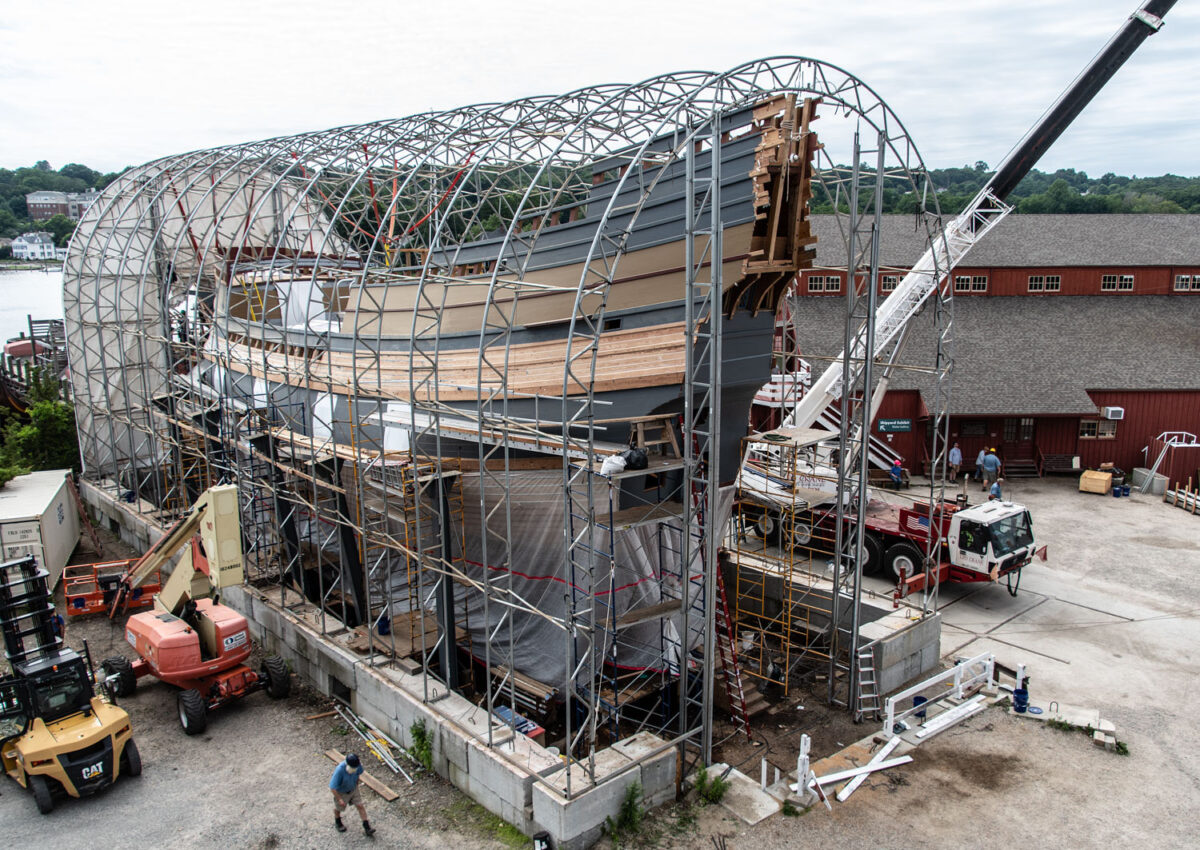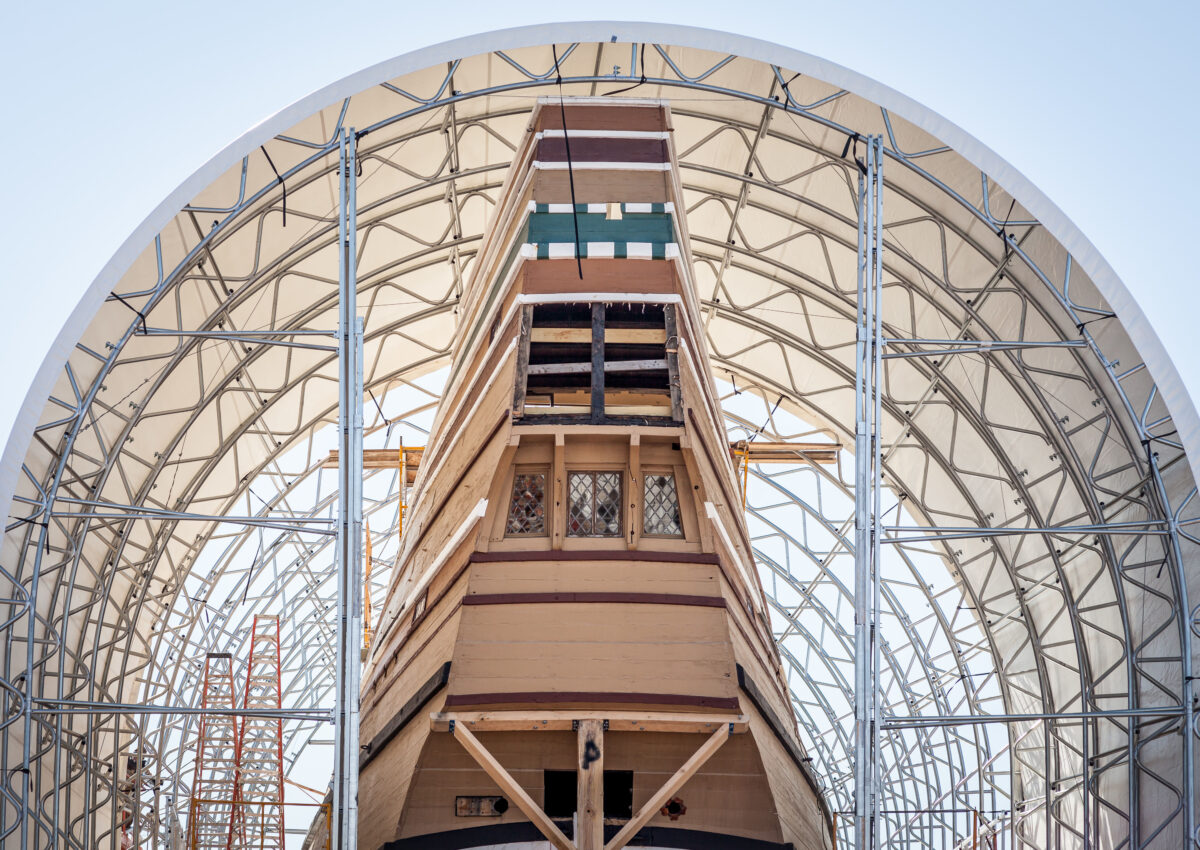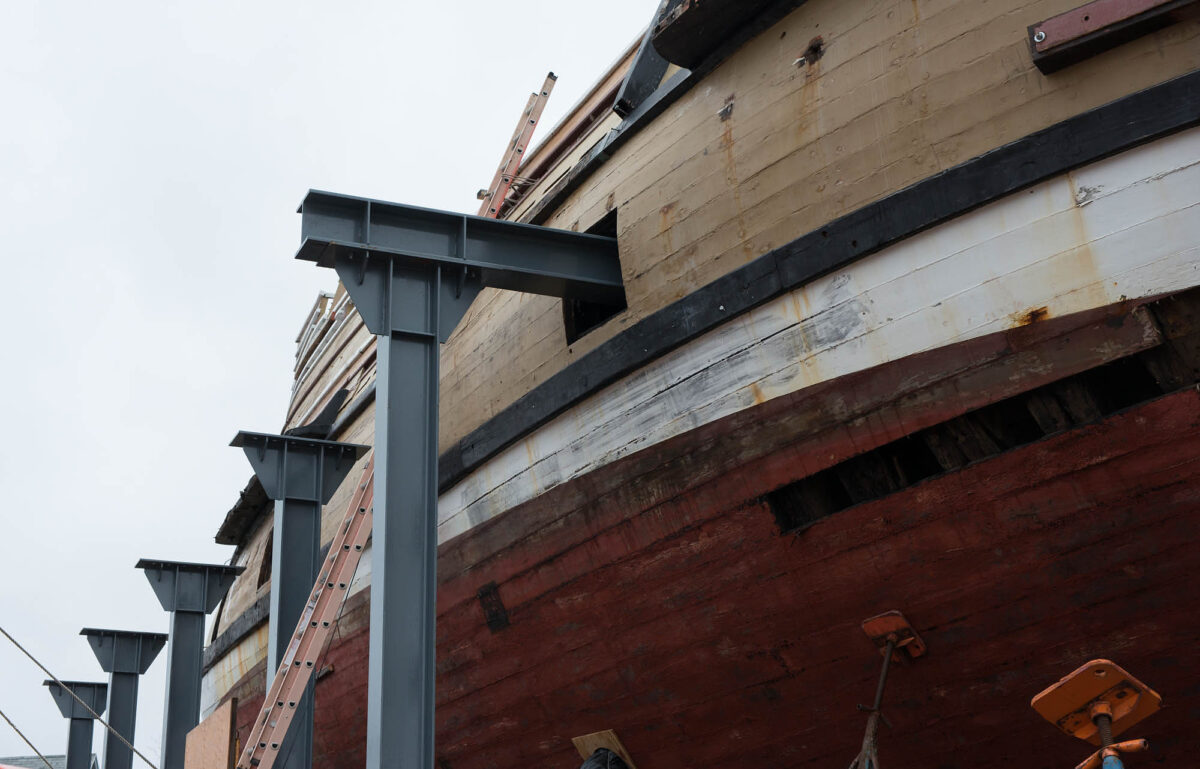
After nearly 3 years hidden under a large tent in the Shipyard, crews this week disassembled the structure that has sheltered Mayflower II during her restoration. The ship is now open for visitors to view in its cradle and it is a rare opportunity to see the entire hull out of the water.
The onshore portion of the restoration is in the home stretch as Mayflower II will be launched in a public ceremony Saturday, September 7.
The 62-year-old wooden ship has been hauled out in the Henry B. duPont Preservation Shipyard at Mystic Seaport Museum for major work to prepare her for participation in the 400th anniversary celebration of the Pilgrim’s historic voyage. Mayflower II is owned by Plimoth Plantion, which displays the vessel in Plymouth Harbor.
The original Mayflower sailed back to England in April of 1621, where it was later sold in ruins and most likely broken up. Mayflower II, was designed by MIT-trained naval architect William Avery Baker for Plimoth Plantation. The ship is a full-scale reproduction of the original Mayflower and was built in 1955-57 in Brixham, England. The details of the ship, from the solid oak timbers and tarred hemp rigging to the wood and horn lanterns and hand-colored maps, were carefully re-created to give visitors a sense of what the original 17th-century vessel was like.
The ship was a gift to the people of America from the people of England in honor of the friendships formed during World War II. Since its arrival in 1957, Mayflower II has been an educational exhibit of Plimoth Plantation.
The launch ceremony will be held in the shipyard at 2 p.m. and will be open to Museum visitors. Historian and author Nathaniel Philbrick will deliver a keynote address and the British Consul General in Boston, Harriet Cross, will christen the ship will christen the ship using a bottle containing water from all 50 states as well as Plymouth, UK. Music will be provided by the US Coast Guard Band. The process will be very similar to the launch of the 1841 whaleship Charles W. Morgan in 2013, Mayflower II will be rolled out onto a platform on the shipyard’s shiplift. At a designated signal, the platform will slowly lower the ship into the water until she floats in the Mystic River.
On July 8, Mayflower Sails 2020 announced the ship would come to Boston for a free maritime festival next spring, May 14 through 19, 2020, in the Charlestown Navy Yard. The ship will return to its berth in historic Plymouth Harbor after the event. Current plans call for the ship to remain at Mystic Seaport Museum until early spring 2020 for completion of the restoration and rigging.

















